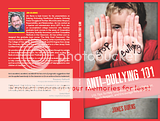Disrespect is really a symptom of a deeper problem going on within the mind of a child. Anger or guilt is at the root. Often teachers are not even aware that the child is angry but notice a change in their attitude, and are not sure where it is coming from.
Rules and regulations and compassion and understanding are critical for a successful classroom to run as well as for a successful relationship to develop between students and teachers. Anytime there is an imbalance between the two, disrespect will occur. We may think that we are doing a student a favor by letting him get away with certain behavior, too much mercy however will result in a disrespectful attitude. Autocracy will also result in a problem because the student will constantly be wrestling with what he has to do to please you. It is critical to balance the two and use as much authority and influence as needed.
Some suggestions for developing a classroom of respect and kindness are listed below. They are all relationship based and encourage positive interaction between students and teachers.
PRAISE – Begin a praise day and have all students write down something they like about another person in the class. It could start, “The nicest thing about you is” and have the students finish the paragraph. This encourages respect amongst students and makes it the norm in your classroom. One student gets a turn everyday. The teacher becomes quality control and filters out any negative comments. One student a day leaves with a folder of nice comments made about them.
Of course teachers should use praise as a tool for motivation. Remember to praise character not achievement.
KEEP PROMISES – Students will wrap their life around promises you make to them. Make them very sparingly and very carefully. Consider all the variables and make sure you can control them. Don’t tell students they can bring candy to school for Halloween and then find out administration doesn’t allow it. Make promises and keep them.
SINCERITY AND HONESTY – Students can pick out a phony a mile away. Be sincere with your concerns and student abilities.
SAY HELLO – Say hello to all students. This encourages communication and helps to break down any walls between you and the student and helps build a positive relationship.
CALL BY NAME – NO NICKNAMES OR DEROGATORY REMARKS Don’t fall into the trap of calling students a name that their friends call them. Remember “Leave it to Beaver” his teacher did not call him Beaver she called him Theodore.
AFFECTION – Because of the fear of touching teachers have shied away from touching their students. We are not talking here about inappropriateness but rather a hand on the shoulder, a high five, or a pat on the back. This not only affirms but also makes the student feel that you recognize and are aware of them.
LISTENING – There are five types of listening, ignoring, pretend listening, selective listening, attentive listening and finally empathic listening. We all want to be empathic listeners. This is when we listen with our body posture and our eyes. We reflect back content and feeling. We don’t offer any advice but rather use listening as a means of strengthening the relationship. We want avoid reading our own autobiography into the conversation.
2-3-4-5 X 10 – Every day for ten days straight have a 2-3-4 or 5 minute conversation with one of your students just like you would with a good friend. Have several of these going on everyday. Around day eight the students will look to you for the conversation and develop a greater sense for you as a person.
LITTLE COURTESIES – The little things are the big things. Model.





